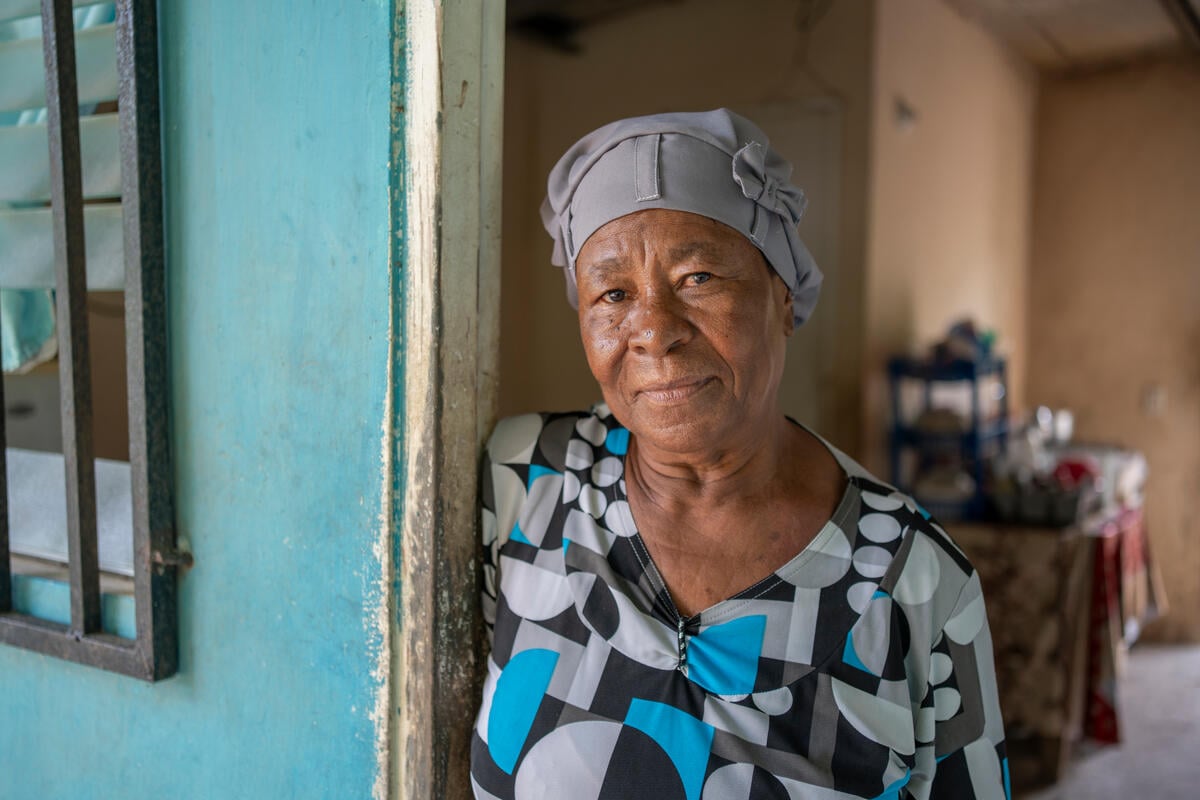Some 1,200 people fearing fresh clashes flee their homes in Colombia
Some 1,200 people fearing fresh clashes flee their homes in Colombia

BELLAVISTA, Colombia, Feb. 18 (UNHCR) - Some 1,200 Afro-Colombians have fled their communities along the Bojayá River, fearing impending clashes between various armed groups, a UNHCR team dispatched to the area on Thursday reported. The numbers of displaced people in the area appeared to be climbing, it said.
UNHCR spokesman Ron Redmond told a news briefing in Geneva the refugee agency is calling on all parties to the Colombian conflict to abide by the principles of international humanitarian law and to respect the civilian population.
The two-person team, based in Quibdó, the provincial capital of Chocó, went to Bellavista to investigate reports of fresh displacement, evaluate the situation on the ground and help coordinate humanitarian assistance with the municipal authorities and with the Social Solidarity Network, the Colombian government group responsible for providing assistance to internally displaced persons (IDPs).
The team said guerrillas of the Revolutionary Armed Forces of Colombia (FARC) and right-wing paramilitaries of the United Self Defense Forces of Colombia (AUC) are reported to be moving to the Bojayá River area, while the Colombian Army is preparing an offensive in the zone.
Afraid that fighting could break out between these armed forces, the Afro-Colombian communities of La Loma, Piedra Candela and Caimanero fled their homes earlier this week. The inhabitants of Piedra Candela have already been uprooted by fighting in the past and only returned to their homes in September. Fighting has also previously displaced residents of Caimanero.
The displaced people are now in Bellavista, the main village in the area. The Bojayá municipal authorities are providing them with emergency food and shelter but have warned that the infrastructure in the village of Bellavista is insufficient to accommodate such a large number of people.
Roughly 7,000 people live in the municipality of Bojayá, and some 5,000 of them could be at direct risk of displacement, according to the local authorities. Last November, UNHCR warned that the increased presence of irregular armed groups in this area could spark a wave of mass displacement. Colombia's Ombudsman's office issued an early warning about the region only last month.
The region is known for the May 2002 massacre, when 119 people taking refuge in the church at Bellavista were killed by a mortar during fighting between FARC guerrillas and AUC paramilitaries. Thousands of people left the area after the massacre, and hundreds of them have still not returned.
Last year, clashes between various armed groups, and with the Colombian military forces, resulted in several large-scale displacements. In March, 1,200 indigenous Embera fled their homes along the Opogado, Napipi and Bojayá rivers following clashes between armed groups. They later returned to their villages over the summer. In May, over 1,000 Afro-Colombians fled their homes and sought refuge in Bellavista following fighting between the Colombian army and FARC guerrillas.
Meanwhile, in the areas of Novita and Condoto, in the south of Chocó, irregular armed groups are imposing blockades to prevent goods from reaching their enemies, tightening their stranglehold on the civilian population and causing severe hardship. Some 450 new displaced people have been registered in Condoto in recent days.









